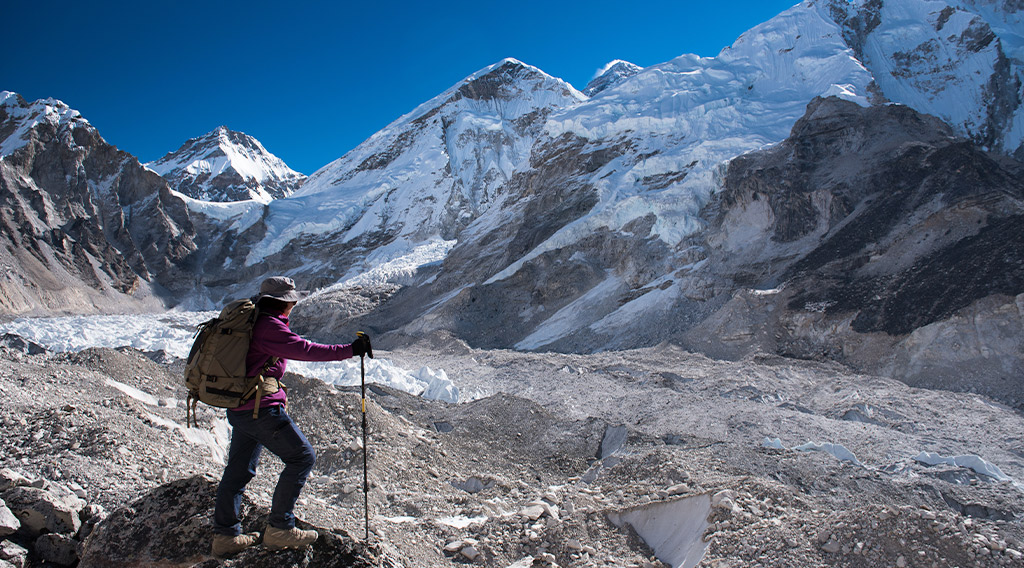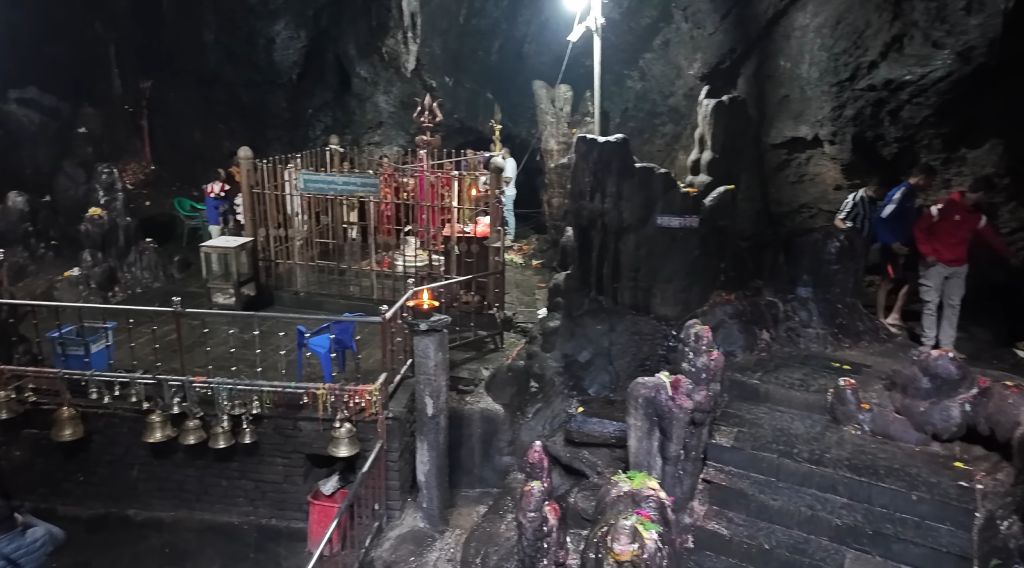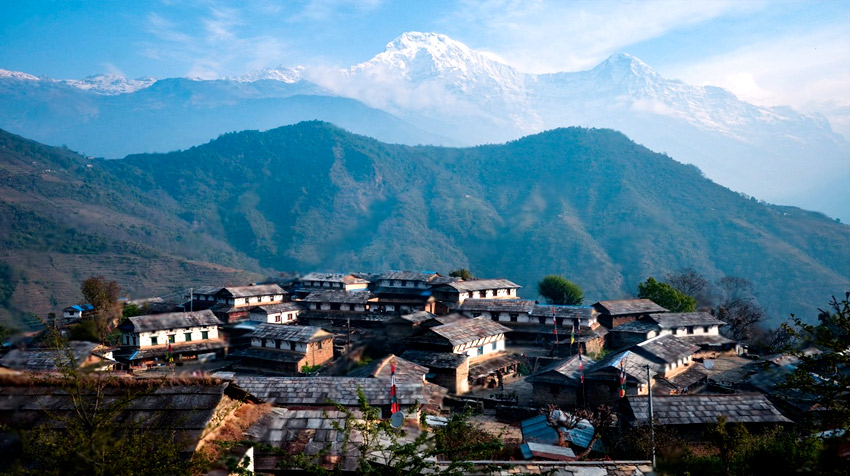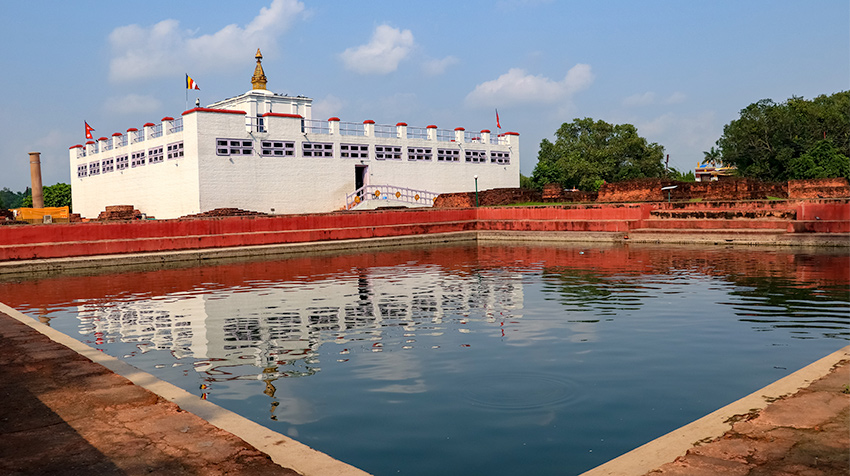Lumbini Spiritual Tour to the Sacred Birthplace of Lord Buddha
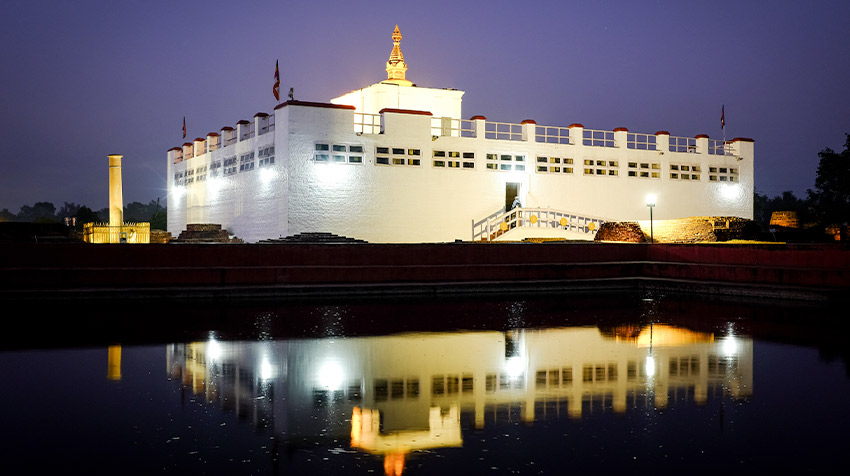
Lumbini, nestled in the serene Terai plains of southern Nepal, is not just a geographical location but a profound spiritual and historical landmark. Recognized universally as the birthplace of Siddhartha Gautama, who later attained enlightenment and became the Buddha, Lumbini is a testament to Buddhism's rich cultural and religious heritage. This sacred site is a UNESCO World Heritage Site, drawing pilgrims, historians, and tourists from all corners of the globe, each seeking to connect with the origins of a figure whose teachings have shaped civilizations and philosophies for over two millennia. The best time to visit Lumbini is during the winter months, from November to February when the weather is pleasant, and the site is less crowded.
Historical Significance of Lumbini
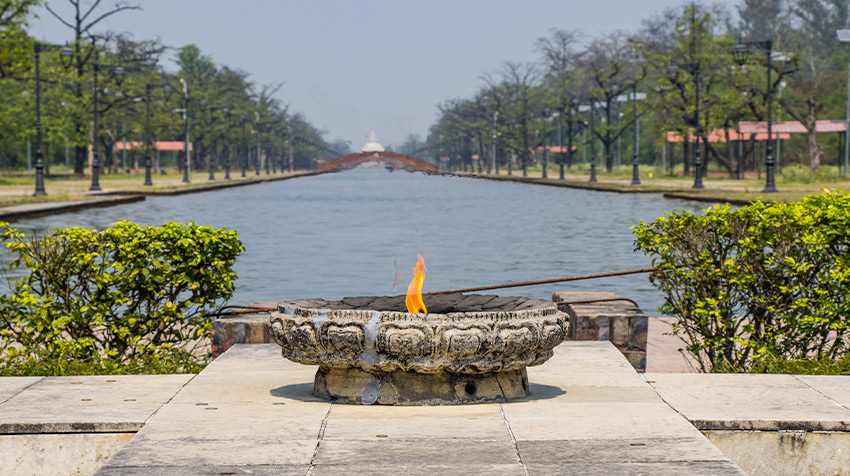
The historical significance of Lumbini is unparalleled. According to ancient Buddhist texts, Queen Mayadevi, while on her way to her parental home, gave birth to Siddhartha Gautama in Lumbini in 623 BCE, under a sal tree. This event is a cornerstone of Buddhist traditions and a pivotal moment in world history. The birth of Siddhartha Gautama heralded the advent of a new spiritual path characterized by compassion, mindfulness, and the quest for enlightenment, a history that continues to fascinate and intrigue us.
The site gained further prominence when Emperor Ashoka of India, a devout follower of Buddhism, visited Lumbini in 249 BCE. His pilgrimage to this sacred site was marked by the erection of a stone pillar, known today as the Ashoka Pillar, which bears an inscription in Brahmi script. This inscription unequivocally identifies Lumbini as the birthplace of the Buddha, thereby providing irrefutable historical evidence and further solidifying its significance in the annals of history.
Exploring the Main Attractions of Lumbini
Lumbini is a treasure trove of historical and spiritual landmarks, each telling a part of the story of the Buddha's life and the development of Buddhism. The primary attractions in Lumbini include:
1. Maya Devi Temple:
The Maya Devi Temple is the epicenter of Lumbini, marking the exact spot where Siddhartha Gautama was born. This sacred temple complex is a focal point for pilgrims and tourists alike. It comprises several significant elements:
The Sacred Pond (Puskarini): Adjacent to the Maya Devi Temple is the Puskarini pond. It is believed that Queen Mayadevi bathed in this pond before giving birth, where the newborn Buddha received his first purification bath. The pond's serene waters reflect the site's tranquility and sanctity.
Birth Marker Stone: A stone marker denotes the precise location of the Buddha's birth within the temple. This marker is a revered object of veneration, symbolizing the beginning of a journey that would lead to profound spiritual insights and teachings.
Ancient Ruins: The Maya Devi Temple is constructed over the ruins of earlier structures dating back to the 3rd century BCE. These ancient ruins provide invaluable insights into the architectural styles and cultural practices of the time, offering a glimpse into the historical context of the Buddha's birth.
2. Ashoka Pillar:
The Ashoka Pillar is a significant historical monument erected by Emperor Ashoka during his pilgrimage to Lumbini. Standing tall within the sacred garden, the pillar's inscription in Brahmi script not only commemorates Ashoka's visit but also unequivocally identifies Lumbini as the birthplace of the Buddha. This pillar is a crucial link to understanding the early spread of Buddhism and the reverence for the Buddha's birthplace.
3. Monastic Zone:
The Monastic Zone in Lumbini is a unique area dedicated to the construction of monasteries by Buddhist communities worldwide. This zone is divided into two sections:
Eastern Monastic Zone: This area is dedicated to Theravada Buddhism and features monasteries built by countries such as Thailand, Sri Lanka, and Myanmar. Each monastery reflects its respective country's traditional architectural styles and cultural heritage, creating a rich tapestry of Theravada Buddhist art and architecture.
Western Monastic Zone: The Western Monastic Zone focuses on Mahayana Buddhism and showcases monasteries from nations like China, Japan, and Korea. The intricate designs and cultural artistry of these monasteries provide insights into the diverse expressions of Mahayana Buddhism, highlighting the universality and adaptability of the Buddha's teachings.
4. Lumbini Museum:
The Lumbini Museum is a treasure trove of artifacts and exhibits that narrate the life of the Buddha and the history of Buddhism. The museum's extensive collection includes sculptures, coins, manuscripts, and other historical artifacts. These exhibits offer a comprehensive overview of the Buddha's life, the early development of Buddhism, and its spread across Asia. The museum also features detailed exhibits on Buddhist traditions and practices, giving visitors a deeper understanding of Buddhism's rich cultural and spiritual heritage.
Preservation Efforts for Lumbini
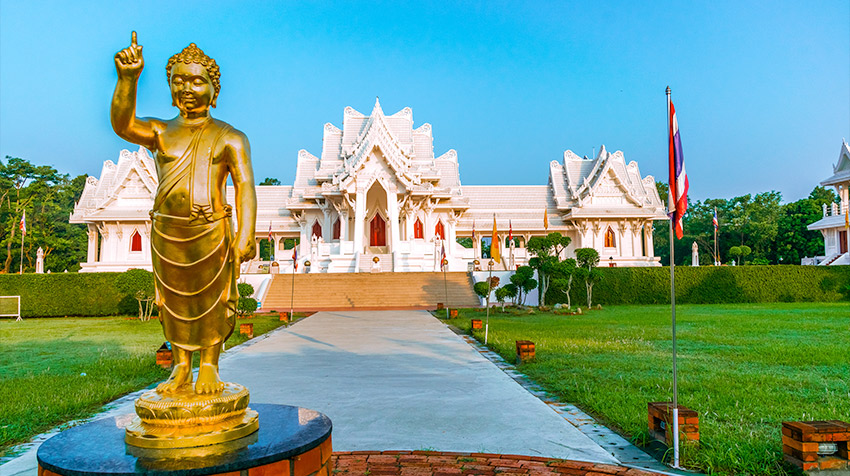
The universal value of Lumbini has prompted various preservation initiatives aimed at maintaining its sanctity and ensuring its continued significance for future generations. These efforts are spearheaded by UNESCO, in collaboration with international bodies such as the Japanese Buddhist Federation, and focus on several key areas:
1. Conservation of Ancient Monuments:
One of the primary objectives of the preservation efforts is the restoration and preservation of ancient ruins, stupas, and monasteries. These structures are invaluable links to the past, providing insights into the historical and architectural heritage of Lumbini. Conservation initiatives aim to prevent the decay of these monuments and ensure their longevity.
2. Infrastructure Development:
As the number of pilgrims and tourists visiting Lumbini grows, infrastructure must be improved to accommodate them. Preservation efforts include developing facilities that cater to visitors' needs while preserving the integrity and sanctity of the site. This includes constructing visitor centers, improved transportation, and enhanced accommodation options.
3. Environmental Management:
Maintaining the ecological balance of the sacred garden and surrounding areas is crucial to preserving Lumbini's serene ambiance. Environmental management initiatives focus on protecting the site's natural beauty, promoting sustainable tourism practices, and ensuring that the development of infrastructure does not compromise the area's ecological integrity.
Pilgrimage and Spiritual Significance
Lumbini is not just a historical site; it is a living spiritual center that continues to inspire and attract pilgrims worldwide. For millions of Buddhists, a pilgrimage to Lumbini is a profound spiritual journey, a chance to walk in the footsteps of the Buddha and connect with the origins of his teachings. The serene environment of Lumbini, with its lush gardens, tranquil ponds, and ancient monuments, provides an ideal setting for meditation, reflection, and spiritual renewal, inspiring a deep sense of connection and spiritual growth.
The act of pilgrimage to Lumbini is imbued with deep spiritual significance. It is an opportunity for devotees to pay homage to the Buddha, seek blessings, and engage in acts of devotion and contemplation. The presence of monasteries from different Buddhist traditions further enriches the spiritual experience, offering pilgrims a chance to witness the diverse expressions of Buddhism and participate in various religious practices and rituals.
The Universal Appeal of Lumbini
While Lumbini holds a special place in the hearts of Buddhists, its appeal extends beyond religious boundaries. The teachings of the Buddha centered on compassion, mindfulness, and the quest for enlightenment resonate with people of all faiths and backgrounds. As the birthplace of such a universal figure, Lumbini serves as a beacon of peace and understanding, inviting all who seek spiritual growth and harmony.
The site's universal appeal is reflected in the diverse range of visitors it attracts. From devout pilgrims to curious tourists, historians, and spiritual seekers, Lumbini welcomes all with open arms. The site's tranquil beauty and profound historical and spiritual significance create an atmosphere that fosters introspection, learning, and connection.
Future Prospects and Challenges
Looking ahead, Lumbini faces both opportunities and challenges. The increasing global interest in Buddhism and spiritual tourism presents an opportunity to develop Lumbini further as a major pilgrimage and tourist destination. However, this also challenges managing tourism's impact on the site's cultural and ecological integrity..
Sustainable tourism practices are essential to ensure that Lumbini's development does not compromise its historical and spiritual significance. This requires a balanced approach that prioritizes conservation and preservation while accommodating visitors' needs. Collaborative efforts between local authorities, international organizations, and the global Buddhist community are vital to this balance
Conclusion
Lumbini, the birthplace of Lord Buddha, remains a timeless sanctuary of peace, enlightenment, and cultural heritage. Its historical significance, spiritual depth, and universal appeal make it a beacon for all who seek to understand the Buddha's teachings and connect with Buddhism's roots.
Ongoing preservation efforts are crucial to maintaining the sanctity and integrity of this sacred site, ensuring that it continues to inspire and enlighten future generations. Lumbini's rich tapestry of history, spirituality, and cultural diversity serves as a reminder of the enduring legacy of the Buddha's teachings and the universal quest for peace and understanding.
As we look to the future, the challenge lies in balancing Lumbini's development as a major pilgrimage and tourist destination with the need to preserve its historical and spiritual essence. By embracing sustainable tourism practices and fostering collaborative efforts, we can ensure that Lumbini remains a beacon of peace and enlightenment for future generations.








